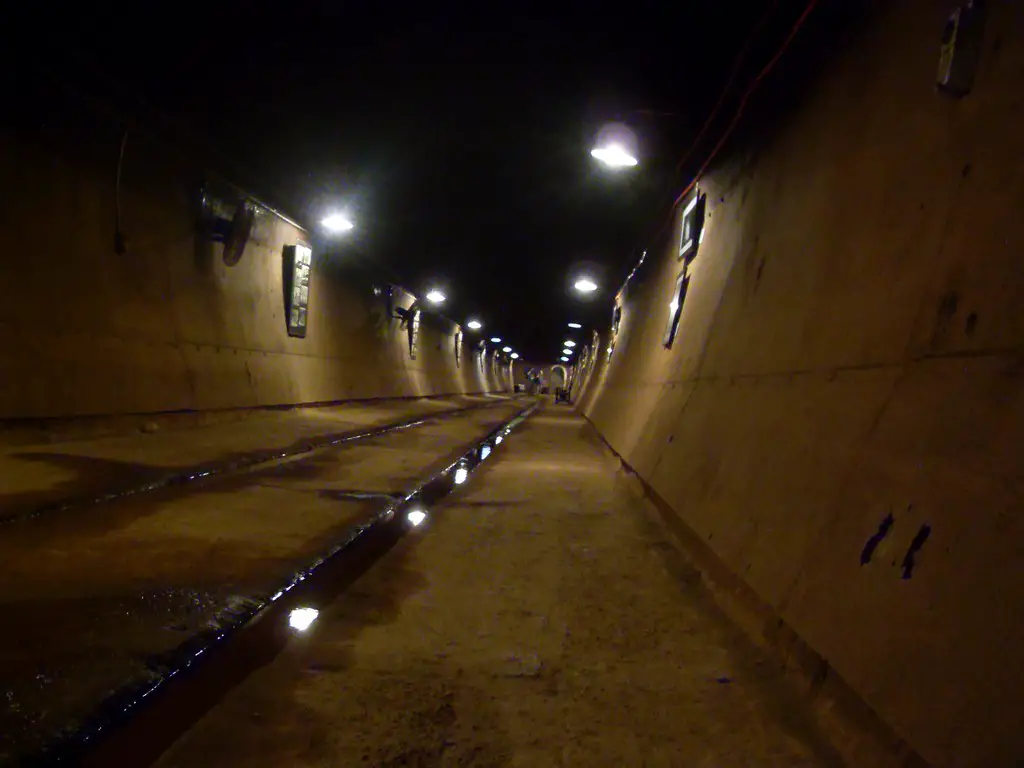💪 Support independent web, support us:
During World War II, a network of oil storage tunnels was built in the suburbs of Darwin, Australia to hold large amounts of fuel for the Allied forces.
What to see or do: Visitors can take a tour of the oil tunnels to learn about their history and construction during the war. The tunnels feature interpretive displays and exhibits, as well as a short video documentary.
Don’t miss: Don’t miss the opportunity to explore the tunnels firsthand and see how they contributed to the war effort.
The tunnels offer a unique and fascinating insight into the history and strategy of the Allies in the Pacific theater of World War II.
Insider travel tips: – Wear comfortable shoes as the tunnels involve some walking and climbing.
2. Darwin Aviation Museum – Darwin
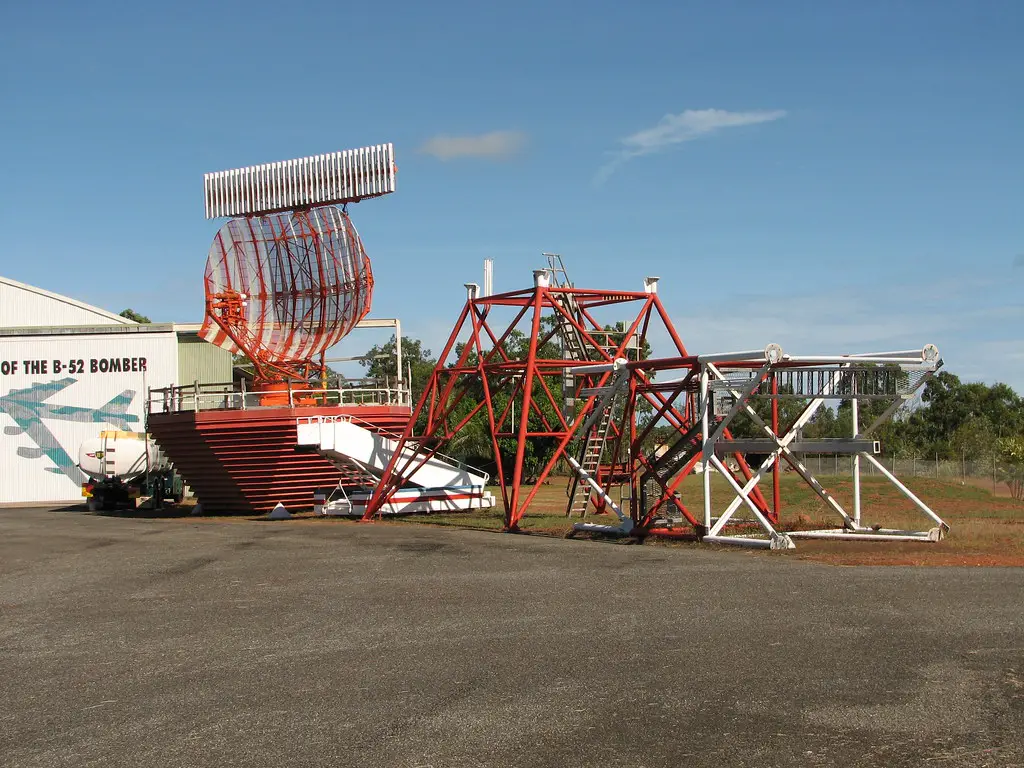
The Darwin Aviation Museum is a museum dedicated to the history of aviation in Australia’s Northern Territory.
What to see or do: The museum features an impressive collection of aircraft and aviation-related exhibits.
Visitors can explore the indoor exhibitions and also walk around the outdoor display area, which includes a B-52 bomber, a Spitfire fighter plane, and a DC-3 airliner.
Don’t miss: The highlight of the Darwin Aviation Museum is the chance to climb aboard a B-52 bomber and experience what it was like to fly one of these massive planes.
Insider travel tips: – The museum is open every day except Christmas Day and Good Friday.
3. The Ghan railway – Alice Springs
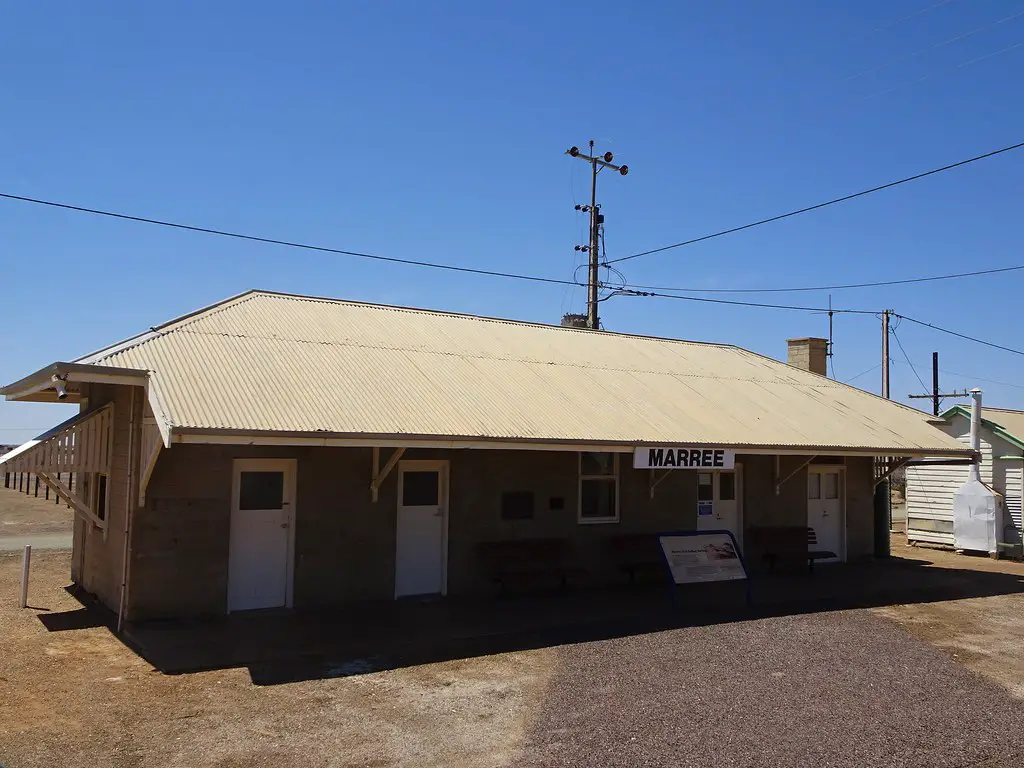
The Ghan is a legendary train journey that travels through the heart of Australia, from Darwin in the north to Adelaide in the south.
What to see or do: Along the way, you’ll traverse rugged landscapes, cross deep canyons, and pass by ancient rock formations. The journey takes you through Alice Springs, which is situated in the middle of Australia’s red desert.
Don’t miss: While in Alice Springs, make sure to visit Uluru (also known as Ayers Rock), a massive sandstone rock formation that is sacred to Aboriginal Australians.
You can also take a tour of the MacDonnell Ranges, which are a series of stunning mountain ranges that feature deep gorges, waterholes, and hot springs.
Insider travel tips: Make sure to book your trip well in advance, as the Ghan is a popular journey and sells out quickly. If you can, splurge on a premium cabin, which offers more space and includes all meals and drinks.
Also, be sure to pack plenty of sunscreen and a hat, as the Australian sun can be intense.
4. Mindil Beach Sunset Market – Darwin
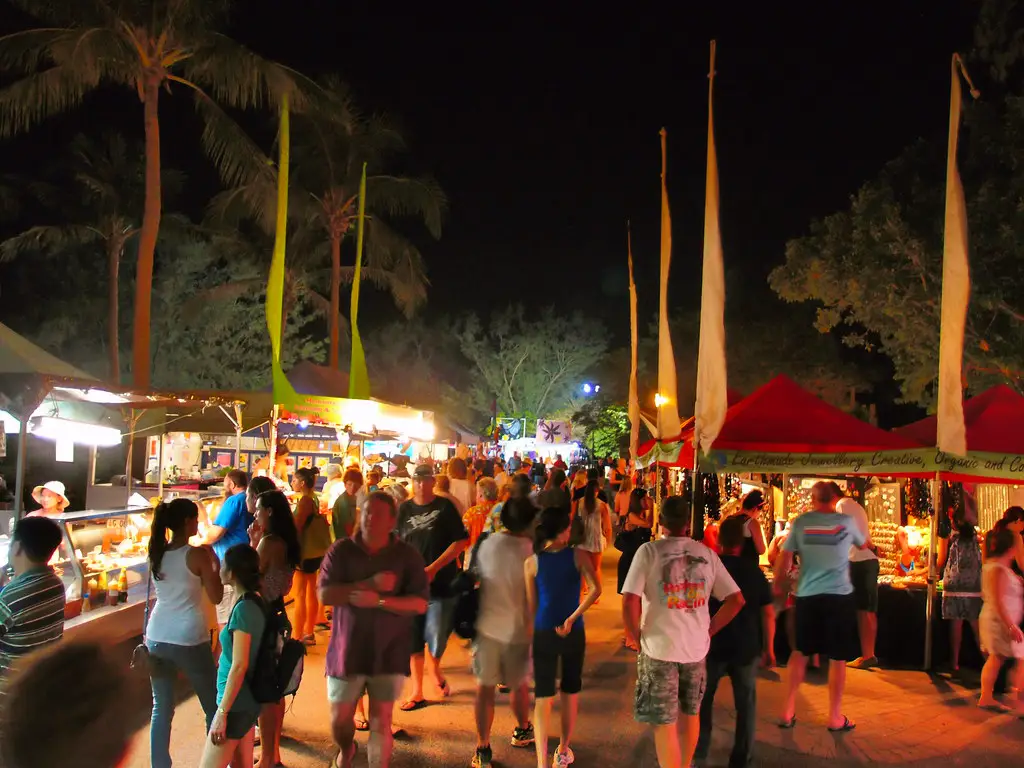
Mindil Beach Sunset Market is a vibrant and colorful outdoor market located in Darwin, Australia.
What to see or do: At the market, you can find a diverse range of stalls selling everything from street food to arts and crafts, handmade jewelry, clothing, and more.
The sunset views at Mindil Beach are simply breathtaking, making it an ideal spot to relax and enjoy the laid-back vibe of the Top End.
Don’t miss: Visitors must not miss the chance to sample some of the delicious food available at the market. Mindil Beach Market boasts an enormous selection of international cuisines, including Thai, Malaysian, Chinese, Greek, Indian, and more.
Insider travel tips: – Arrive early to secure a good parking spot and to beat the crowds.
5. Darwin Waterfront Precinct – Darwin
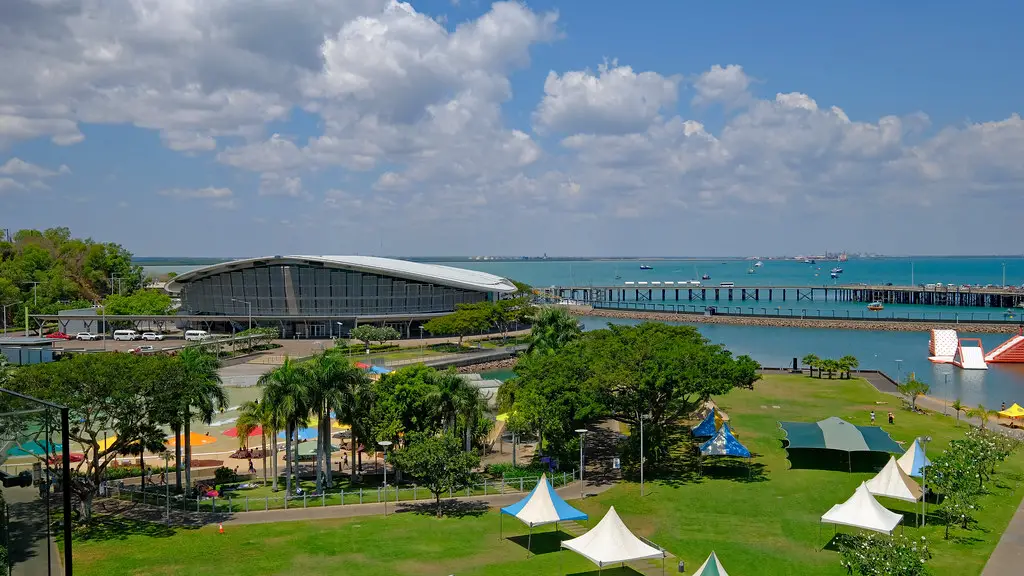
Darwin Waterfront Precinct is a vibrant and modern entertainment hub situated along Darwin’s waterfront.
What to see or do: There’s an abundance of entertainment options at Darwin Waterfront Precinct.
Visitors can take a dip in the lagoon or wave pool, relax on the sandy beach or enjoy a meal at one of the many restaurants or cafes.
The precinct also hosts a range of events from live music performances to food markets.
Don’t miss: Be sure to check out the Darwin Convention Centre located within the precinct. The centre boasts stunning ocean views and is a popular venue for conferences, exhibitions and events.
Insider travel tips: Visit during the dry season (May to October) for perfect weather conditions and bustling crowds. If you’re looking to save some money, bring a picnic to enjoy on the grassy lawns along the waterfront.
Make sure to bring sunscreen and a hat as the Northern Territory sun can be intense.
6. Alice Springs Telegraph Station Historical Reserve – Alice Springs
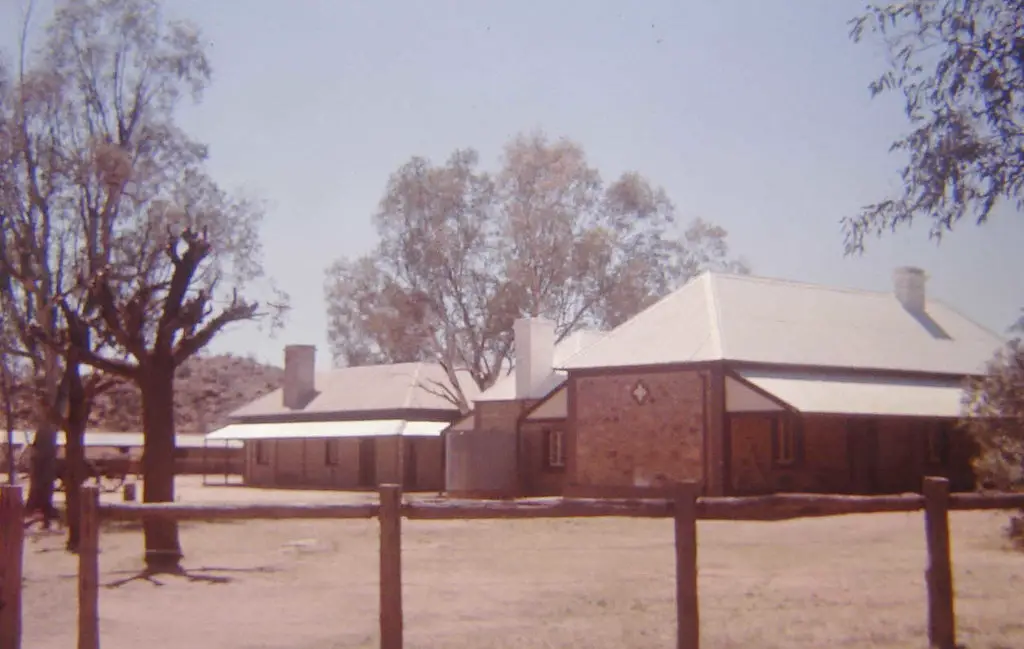
Alice Springs Telegraph Station Historical Reserve is a historical site that played a significant role in the development of the Australian outback.
What to see or do: Visitors can explore the restored buildings, learn about the history of communication, and discover how the telegraph station changed life in the Australian outback.
Don’t miss: Don’t miss the Telegraph Station Trail, a 7km trail that offers stunning views of the surrounding landscape, and the chance to see the remains of the original telegraph line.
Insider travel tips:
7. Royal Flying Doctor Service Museum – Alice Springs
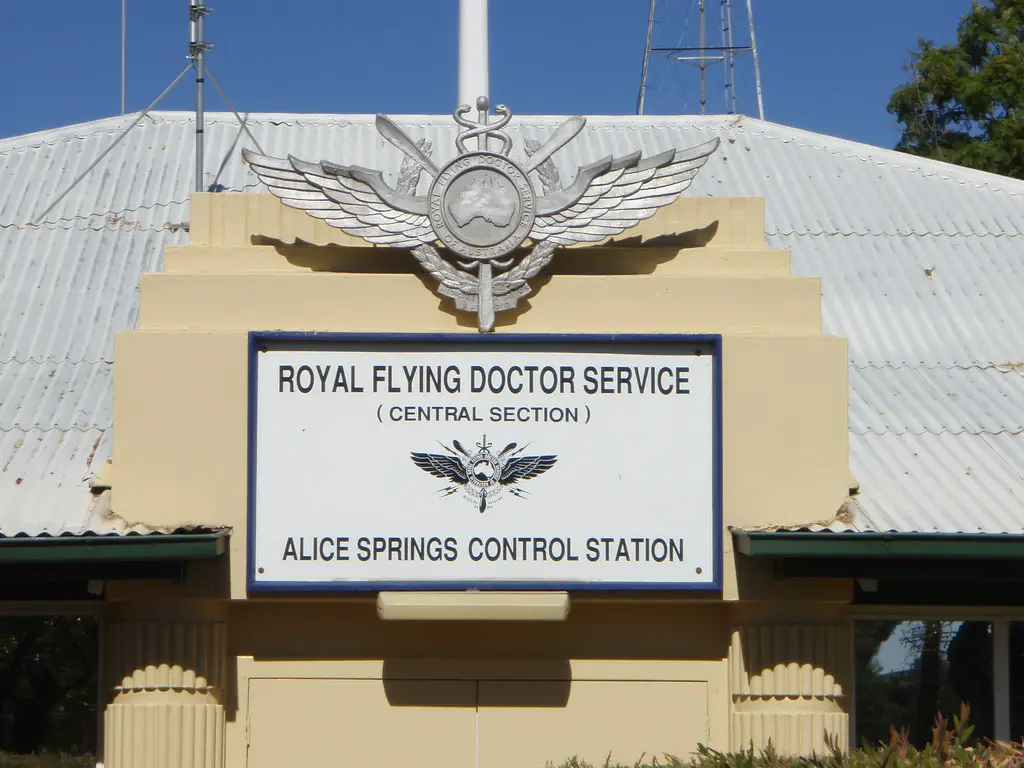
The Royal Flying Doctor Service Museum is a historical museum that showcases the evolution of the Australian Air Ambulance and the heroic efforts of the doctors and pilots who risked their lives to provide medical services to people in the remote outback regions of Australia.
What to see or do: The museum offers a thorough and informative tour for visitors to explore the Royal Flying Doctor Service’s history, its iconic aircraft, and the technology advancements that revolutionized the way medical help was delivered to people.
The visitors can witness the Flying Doctor radio and communications systems, outback life exhibit, and the engine room.
Don’t miss: Don’t miss the outstanding collection of planes and helicopters, including the first flying doctor plane, the De Havilland DH84 Dragon.
The museum houses an impressive library of archives and history that showcases the dedication and the incredible stories of the Royal Flying Doctor Service’s workers.
Insider travel tips: – To fully experience the museum, visitors can watch a short film on the history of the Royal Flying Doctor Service.
8. Fannie Bay Gaol – Darwin
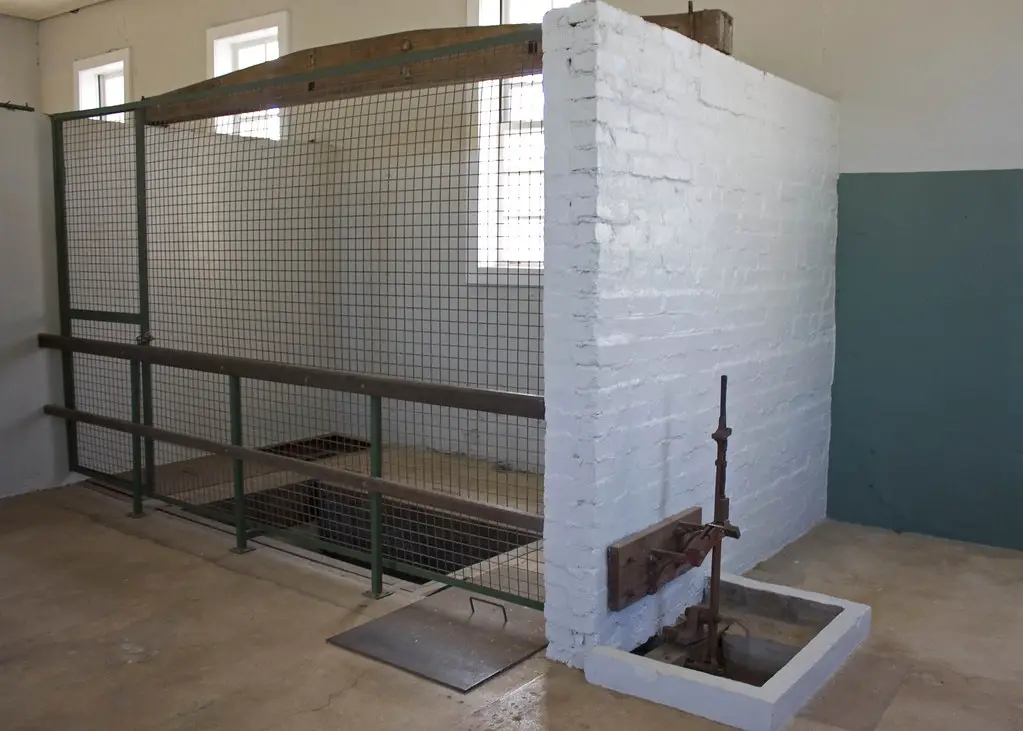
A historic prison turned museum located in Darwin, Australia.
What to see or do: Walk through the cells and see the exhibits that depict the prison life of inmates. Learn about the history of the prison and its impact on the local community.
You can also take a guided tour of the gaol to get a better understanding of its history.
Don’t miss: The gallows in the yard where prisoners were executed. Also, make sure to take a look at the famous prison escape attempt by the seven prisoners in 1974.
Insider travel tips: Visit the gaol during the cooler part of the day as it can get very hot and humid in Darwin. To avoid crowds, visit the gaol during weekdays as it tends to get busy on weekends.
Also, wear comfortable shoes as there is a lot of walking involved.
9. Northern Territory Parliament House – Darwin
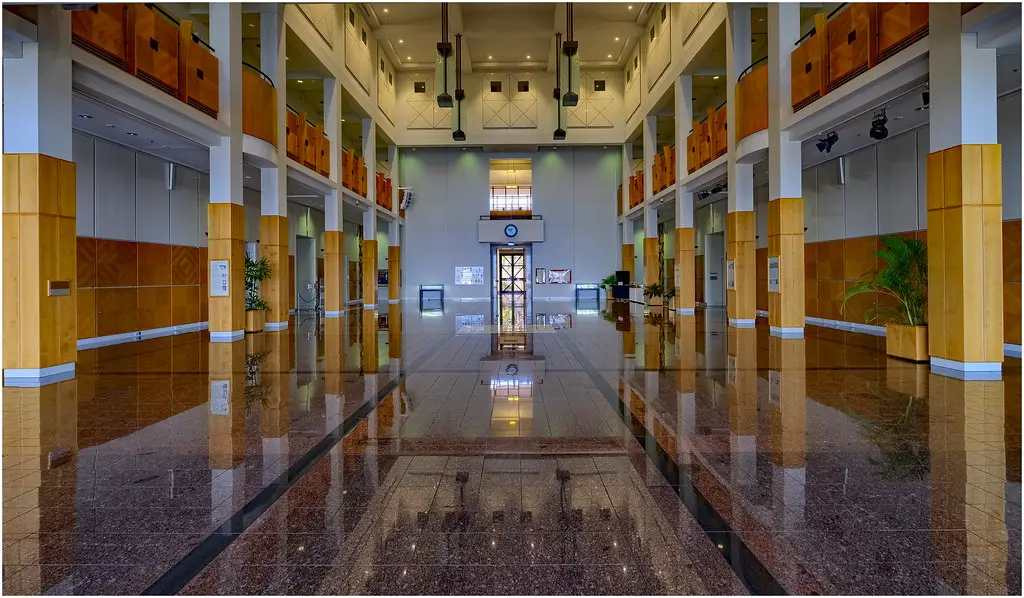
The Northern Territory Parliament House is the home of the Legislative Assembly of the Northern Territory.
What to see or do: The Parliament House is open to the public every weekday, and guided tours are conducted throughout the day.
Visitors can sit in the public gallery and watch the debates, or visit the various chambers and committee rooms, and learn about the history of the Northern Territory government.
Don’t miss: Don’t miss the opportunity to see the 1.8-tonne Black Wattle totem pole, which represents the five language groups of the Northern Territory.
The pole is the largest in the southern hemisphere and was carved by five Indigenous artists.
Insider travel tips: – Visit the Parliamentary Library, which houses an extensive collection of Northern Territory-specific and Commonwealth law resources.
10. Lyons Cottage – Darwin
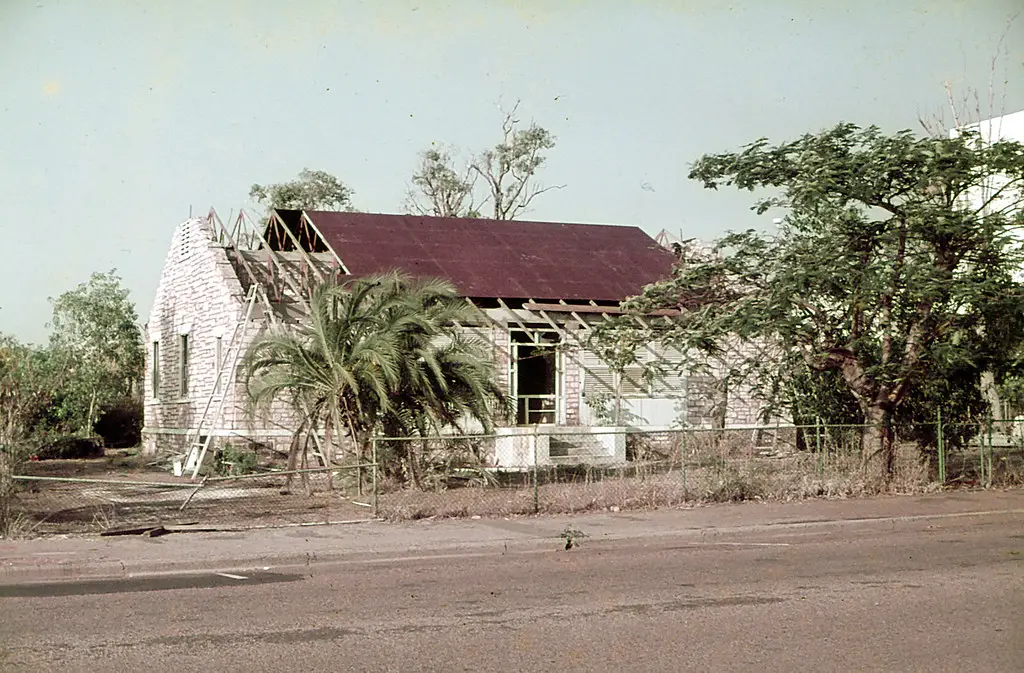
Lyons Cottage is a historic stone building located in Darwin, Northern Territory, Australia.
What to see or do: – Explore the museum and learn about the early history of Darwin.
Don’t miss: The beautiful gardens surrounding Lyons Cottage, which are a great spot for a picnic or to relax.
Insider travel tips: – Check out the special exhibitions that are often on display.
11. Darwin Military Museum – Darwin
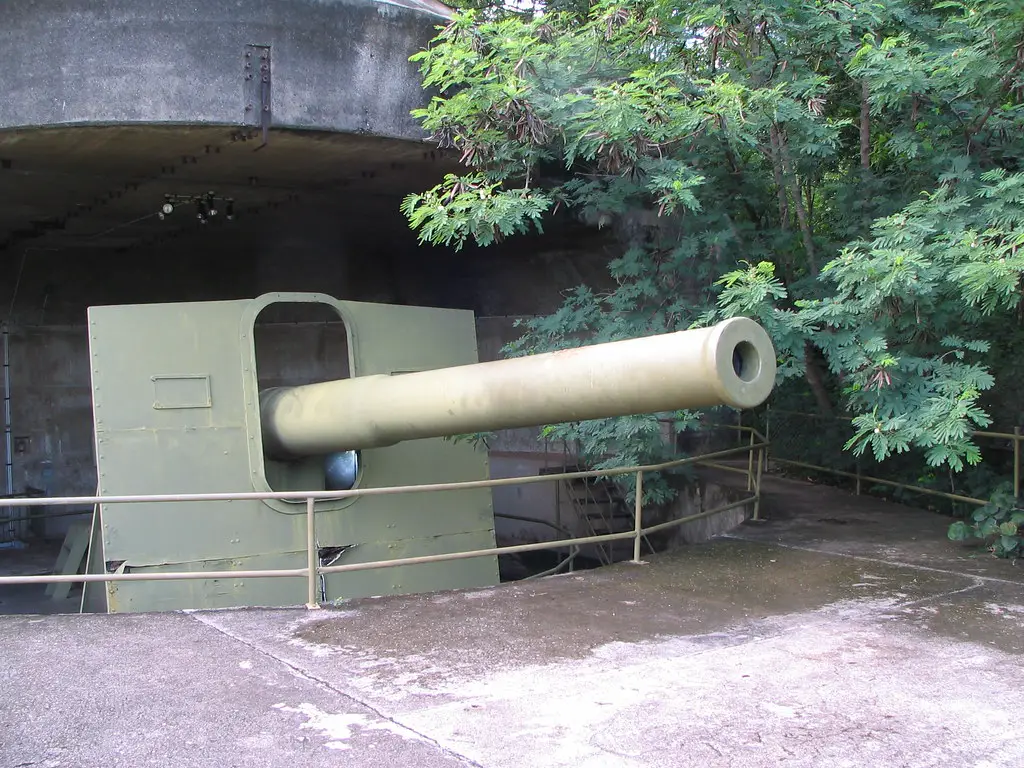
A museum dedicated to the military history of Darwin, Australia.
What to see or do: Visitors can explore the various exhibits, displays, and artifacts that showcase and recount the military history of Darwin. There are also several multimedia displays that provide immersive experiences, including mock air raids and interactive tours of submarines.
Don’t miss: The highlight of the museum is undoubtedly the display of the Bombing of Darwin Harbour, which recounts the devastating attack on the city during World War II.
Visitors can relive the events of that day through various exhibits and displays, including a recreation of a bomb shelter.
Insider travel tips: – The museum is located inside the old ammunition storage bunkers of East Point, which can be a bit difficult to find.
Look out for signs pointing to the museum or ask for directions.
12. Ochre Pits – West MacDonnell Ranges

The Ochre Pits are a unique geological formation located in the West MacDonnell Ranges.
What to see or do: Visitors can see the vibrant colors of the natural ochre rock formations, which have been used for traditional Aboriginal ceremonies for thousands of years.
Don’t miss: Don’t miss the opportunity to witness the ancient Aboriginal art in person, and take photos of the stunning ochre rock faces.
Insider travel tips: Bring sunscreen, plenty of water and a hat as it can get very hot during the day.
Visitors can also learn about the traditional Aboriginal culture and the significance of the Ochre Pits through guided tours from local Indigenous tour guides.
13. St Mary’s Star of the Sea Catholic Cathedral – Darwin
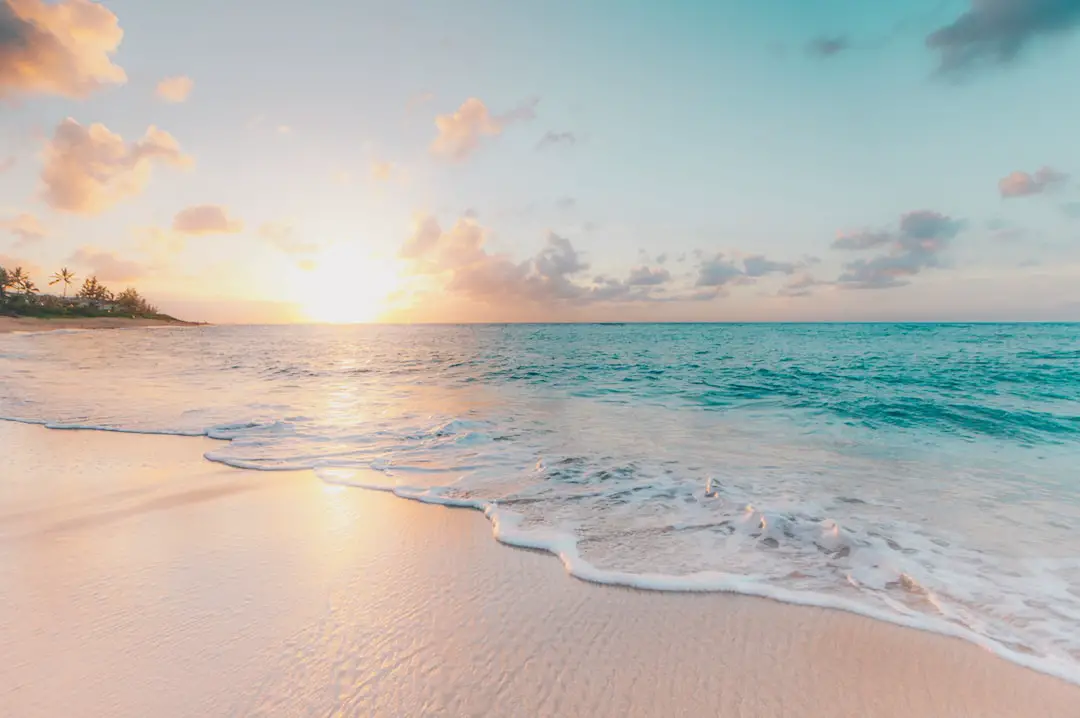
St Mary’s Star of the Sea Catholic Cathedral is a historic landmark and one of the most significant religious sites in Darwin, Australia.
What to see or do: Visitors can explore the stunning cathedral, built in a Gothic Revival style with striking stained glass windows, intricate stonework, and a soaring tower.
There are also regular mass services held at the cathedral throughout the week.
Don’t miss: Be sure to take a moment to appreciate the impressive bell tower, which reaches 35 meters in height and is an iconic feature of the Darwin skyline.
Insider travel tips: – Check cathedral’s website for information about mass times and other events.
14. Deckchair Cinema – Darwin
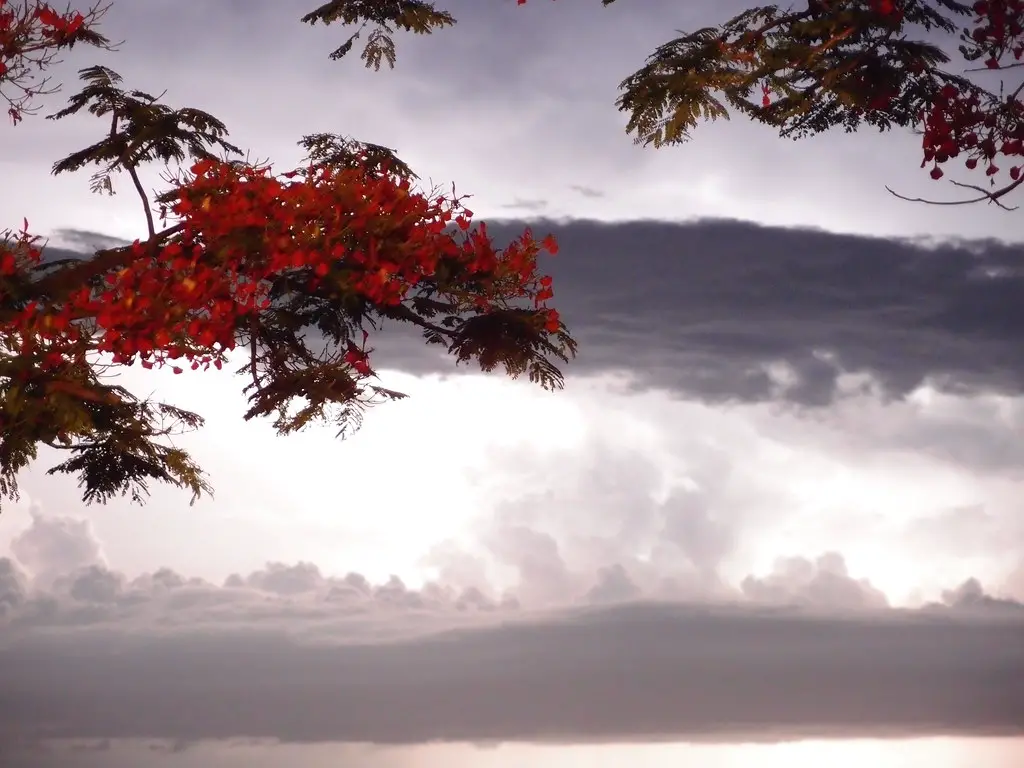
What to see or do: Watch movies under the stars while surrounded by palm trees and bubbling fountains.
Don’t miss: The amazing sunset views from the cinema, as it’s located near the shore.
Insider travel tips: Make sure to bring insect repellent to keep the mosquitoes away. Also, arrive early to get a good seat and take advantage of the bar and snack options.
15. George Brown Darwin Botanic Gardens – Darwin
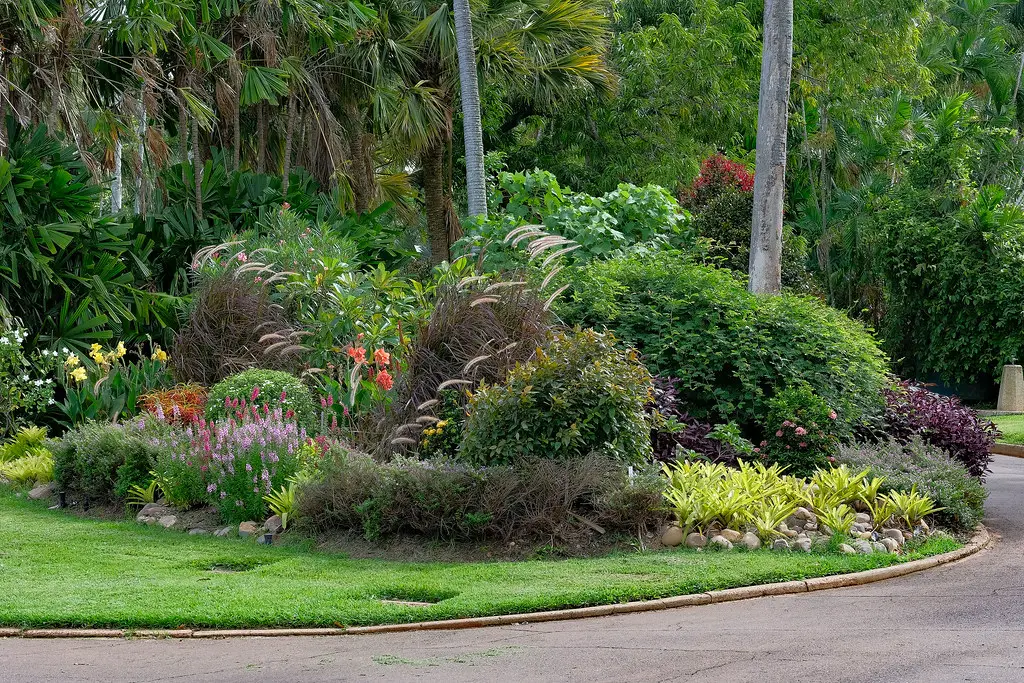
A botanical garden spread over 42 hectares in Darwin, Australia.
What to see or do: Visitors can explore the diverse flora from Northern Australia and other areas such as Africa, Americas, and Asia.
The garden also has a rainforest gully, cactus and succulent garden, and a section of plants used by Indigenous Australians for medicinal purposes.
Don’t miss: The highlight of the garden is the massive conservatory that boasts a variety of tropical plant species from around the world.
The pond area is also a must-visit to witness the unique birdlife that dwells in the garden.
Insider travel tips: Plan a trip during the Dry Season (May-October) to avoid the monsoon season. The gardens are free to visit, but guided tours and information sessions are available at reasonable rates.
Don’t forget to carry sunscreen, insect repellent, and water bottles while exploring the gardens.
16. Araluen Arts Centre – Alice Springs
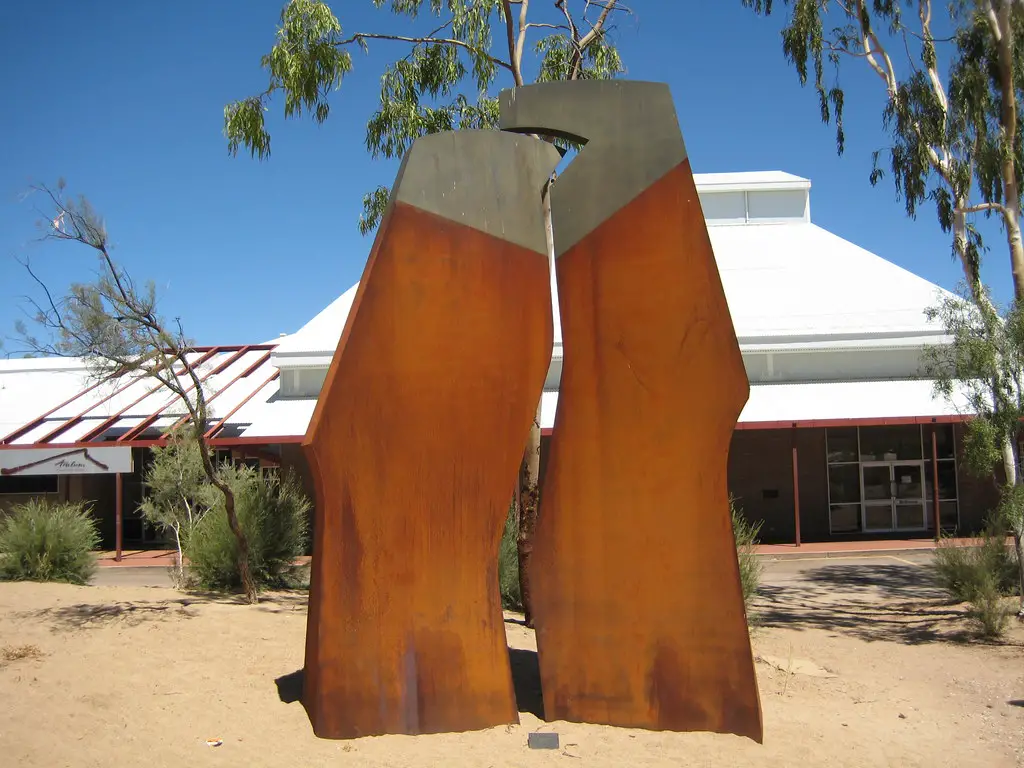
Araluen Arts Centre is a cultural hub in Alice Springs that showcases the art and culture of Central Australia.
What to see or do: The centre has a vast collection of Indigenous art, including paintings, sculptures, and carvings. The galleries showcase exhibitions that are changed regularly.
Visitors can also experience traditional music and dance performances, theatre, and film screenings.
Don’t miss: The Albert Namatjira gallery, which displays the works of the famous Aboriginal watercolourist. Also, the sculpture garden, which is a peaceful oasis with beautiful sculptural pieces.
Insider travel tips: The centre is closed on Mondays.
17. The Kangaroo Sanctuary – Alice Springs
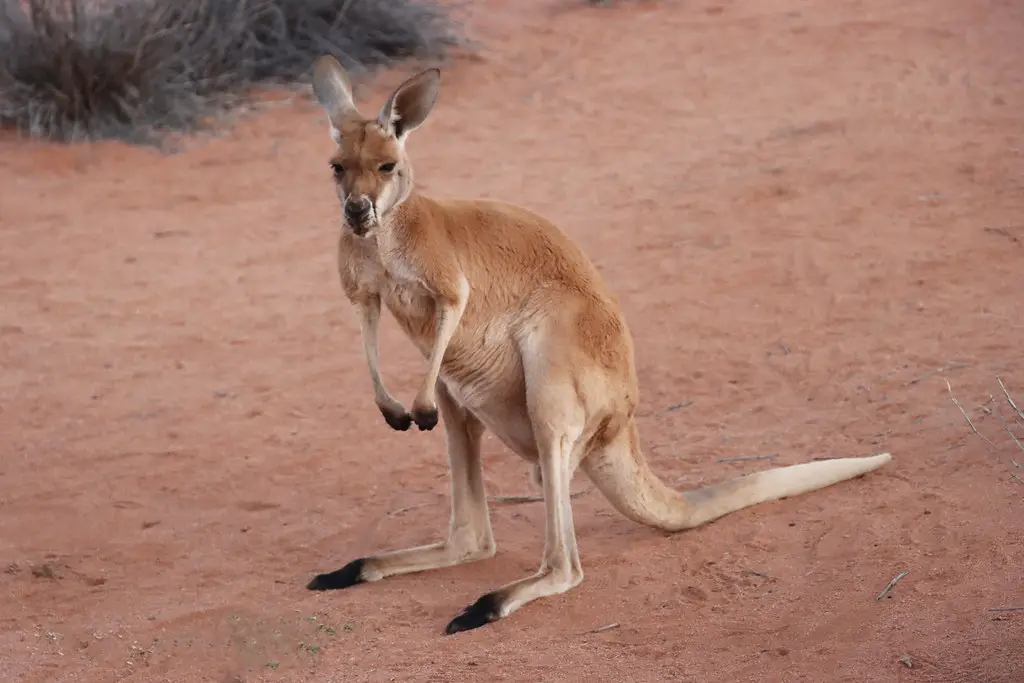
A sanctuary dedicated to the rescue and rehabilitation of orphaned and injured kangaroos in Alice Springs, Australia.
What to see or do: Take a guided sunset tour to see and learn about the resident kangaroos, including the famous Roger, the red kangaroo who became an internet sensation.
Don’t miss: The opportunity to interact with some of the baby joeys who have been rescued and are being hand-raised at the sanctuary.
Insider travel tips:
18. The School of the Air – Alice Springs

The School of the Air is a unique educational institution that delivers primary education to children living in remote and isolated areas of the Northern Territory, Australia.
What to see or do: Visitors can tour the facilities and observe live classes in action via two-way radio, satellite communication, and the internet. The school teaches children in geographically isolated areas across an area of 1.
3 million square kilometers.
Don’t miss: Don’t miss the opportunity to see and learn about the innovative, world-renowned educational program that has been helping remote children in Australia for over 70 years.
Insider travel tips: Book your visit in advance to ensure availability. Visitors are encouraged to bring donations of school supplies or funds to support the school’s operations.
19. Adelaide River War Cemetery – Adelaide River
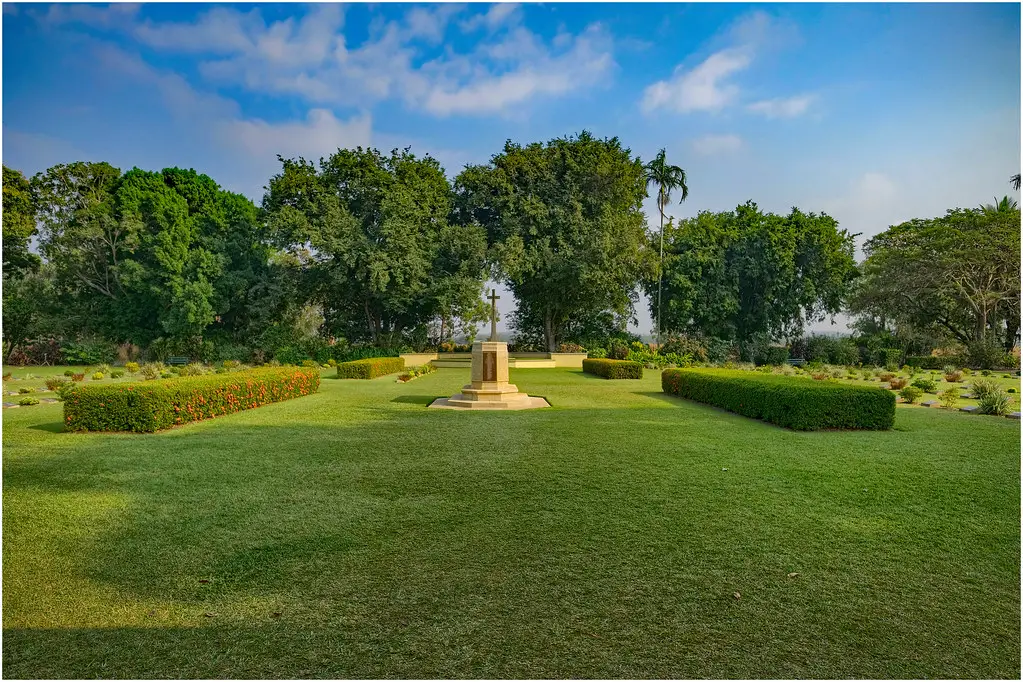
Adelaide River War Cemetery is a beautifully maintained military cemetery located in Adelaide River, Northern Territory, Australia. It is the final resting place of soldiers who died in the defense of Australia during World War II.
What to see or do: Visitors can pay respects to the fallen soldiers from Australia, the United Kingdom, Canada, and the Netherlands who are buried here.
The cemetery has a serene atmosphere and is surrounded by lush greenery, making it a peaceful location to reflect and remember.
Don’t miss: The cemetery has moving stories from the tombstones of the soldiers, including their ages, regiment, and where they originally hailed from.
It is a great place to learn about history and pay tribute to the brave individuals who played a part in defending Australia.
Insider travel tips: – The cemetery is open from dawn to dusk every day.
20. Karlu Karlu/Devil’s Marbles – Tennant Creek
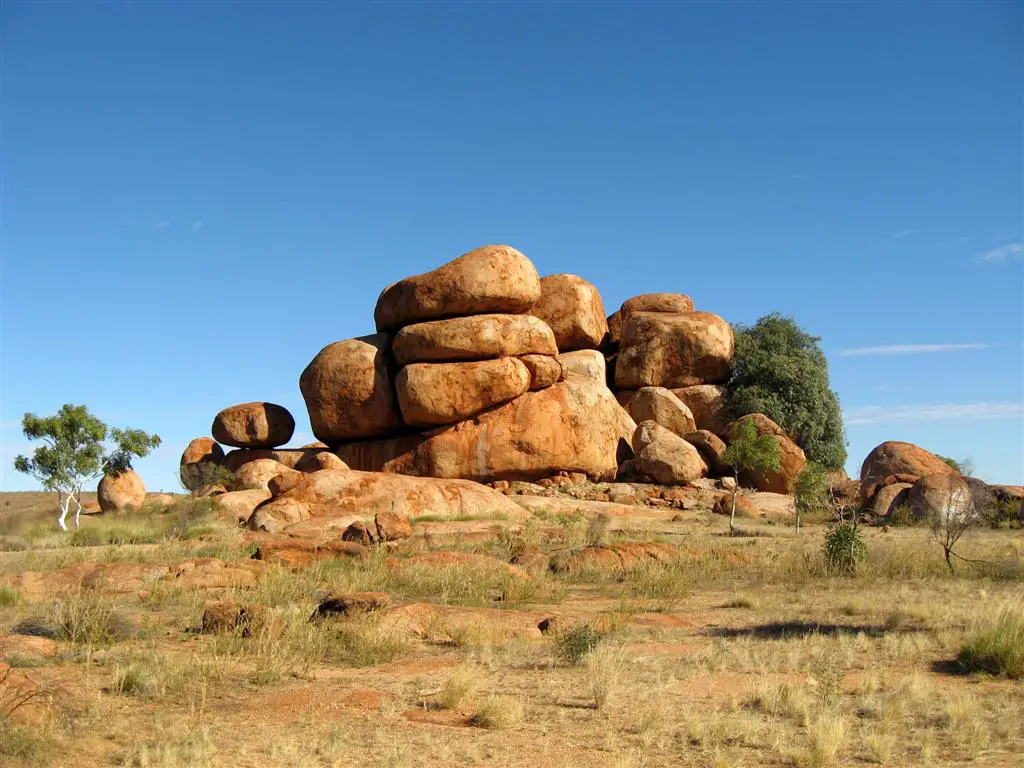
A sacred site for the Aboriginal Warumungu, Kaytetye, Alyawarra and Warlpiri Peoples, Karlu Karlu/Devil’s Marbles is a collection of large, spherical boulders on a vast expanse of flat, red earth.
What to see or do: Take a walk around the boulders, admiring their size and unique shapes. You can also learn about the site’s traditional significance through interpretive signs and guided tours.
Don’t miss: Sunrise and sunset at Karlu Karlu offer stunning views of the boulders, glowing in shades of red and ochre.
Insider travel tips: If you’re planning to camp overnight, bring insect repellent as mosquitos can be quite bothersome. It’s also important to respect the cultural significance of the site and avoid climbing or damaging the boulders.
21. Wave Hill Walk-Off Trail – Kalkarindji
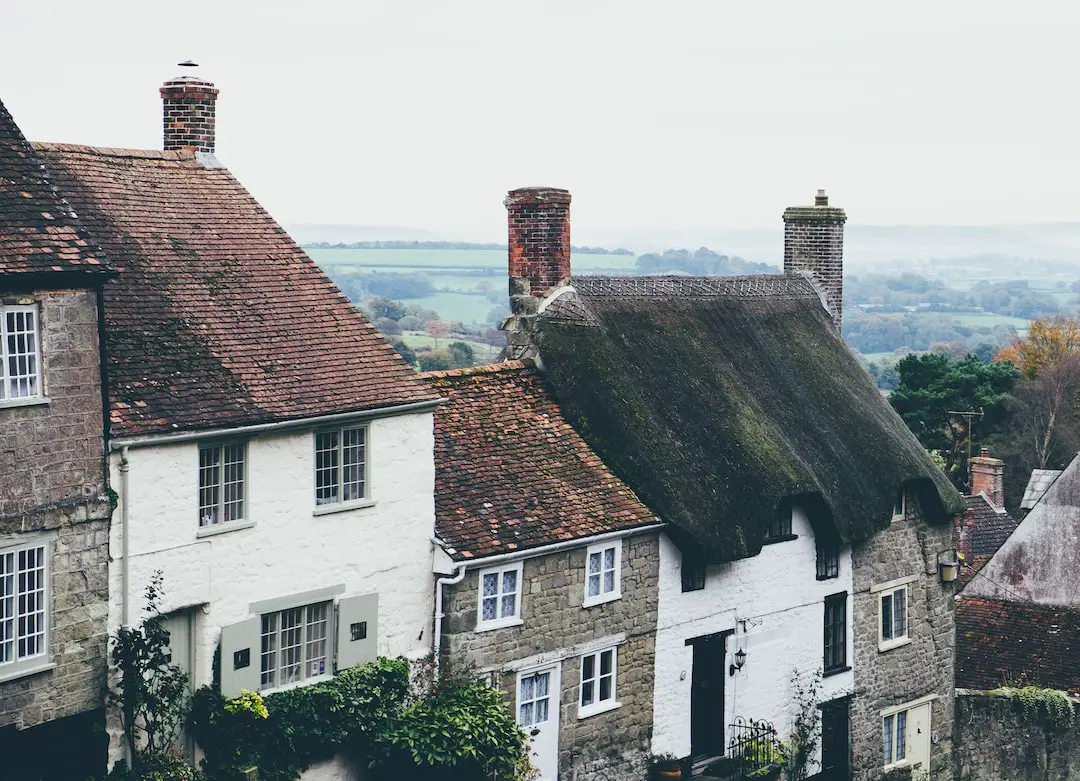
The Wave Hill Walk-Off Trail is a significant historical site located in Kalkarindji, Northern Territory, Australia.
It is an iconic 22-kilometer walking trail that retraces the steps taken by Indigenous Australian workers in 1966 during a protest for equal wages and land rights.
What to see or do: Enjoy a scenic walk through the picturesque landscape and immerse yourself in the rich history of the Indigenous Australian people.
Along the way, you can visit several historical landmarks, such as the Gurindji Strike School and The Freedom Day Festival Grounds.
Don’t miss: Don’t miss the opportunity to learn more about the rich cultural heritage and historical significance of the trail by joining a guided tour led by local Indigenous guides.
Insider travel tips: Be sure to wear comfortable walking shoes, bring plenty of water, and wear appropriate clothing and sun protection as the trail can get quite hot.
It’s also important to note that the Wave Hill Walk-Off Trail is a sacred site, so visitors are encouraged to show respect and abide by the rules and regulations in place.
22. Alice Springs Reptile Centre – Alice Springs
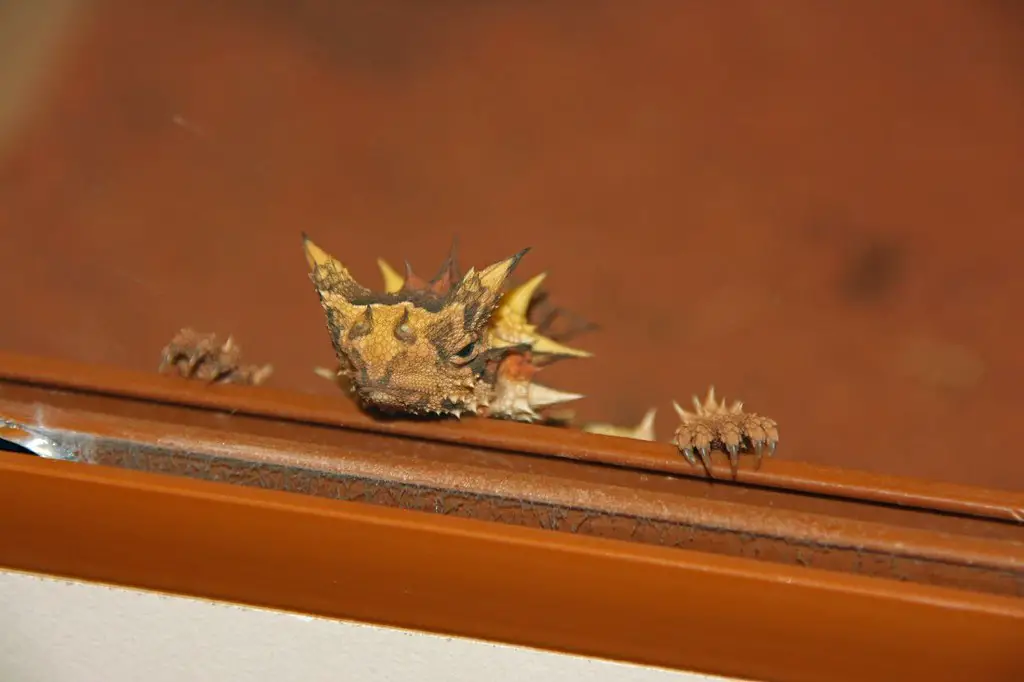
A reptile-focused educational attraction located in Alice Springs, Northern Territory, Australia.
What to see or do: Visitors can enjoy watching and learning about a variety of reptiles, including snakes, lizards, and crocodiles, in their natural habitat.
The centre houses a range of reptilian species that are native to the area including the Perentie lizard, Thorny Devil lizard and Frill-necked Lizard.
Don’t miss: Make sure to catch the daily shows and feedings where experienced handlers introduce visitors to the personalities and habits of these fascinating creatures.
Insider travel tips: Avoid visiting during peak hours to avoid large crowds. Plan to spend at least 2-3 hours to really immerse yourself in the experience.
Also, don’t forget to bring sunscreen and wear comfortable walking shoes.
23. Alice Springs Desert Park – Alice Springs

The Alice Springs Desert Park is a nature reserve and cultural center that showcases the unique plants, animals, and cultures of Australia’s desert regions.
What to see or do: – Take a self-guided walk through the Desert Rivers, Sand Country, and Woodland habitats to see kangaroos, emus, snakes, and other wildlife.
Don’t miss: – The spectacular panorama of the MacDonnell Ranges from the top of the Sand Country habitat.
Insider travel tips: – Wear comfortable shoes, a sun hat, and sunscreen, as the park involves a lot of walking in exposed areas.
💪 Support independent web, support us:
